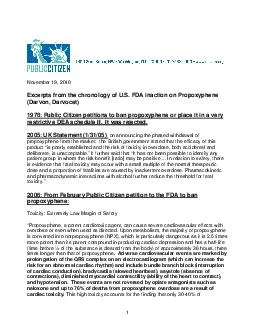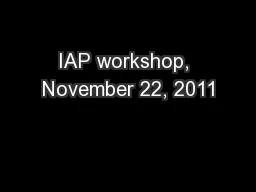PDF-November Excerpts from the chronology of U
Author : myesha-ticknor | Published Date : 2014-11-24
S FDA inaction o n Propoxyphene Darvon Darvocet 1978 Public Citizen petitions to ban propoxyphene or place it in a very restrictive DEA schedule II It was rejected
Presentation Embed Code
Download Presentation
Download Presentation The PPT/PDF document "November Excerpts from the chronology ..." is the property of its rightful owner. Permission is granted to download and print the materials on this website for personal, non-commercial use only, and to display it on your personal computer provided you do not modify the materials and that you retain all copyright notices contained in the materials. By downloading content from our website, you accept the terms of this agreement.
November Excerpts from the chronology of U: Transcript
Download Rules Of Document
"November Excerpts from the chronology of U"The content belongs to its owner. You may download and print it for personal use, without modification, and keep all copyright notices. By downloading, you agree to these terms.
Related Documents














